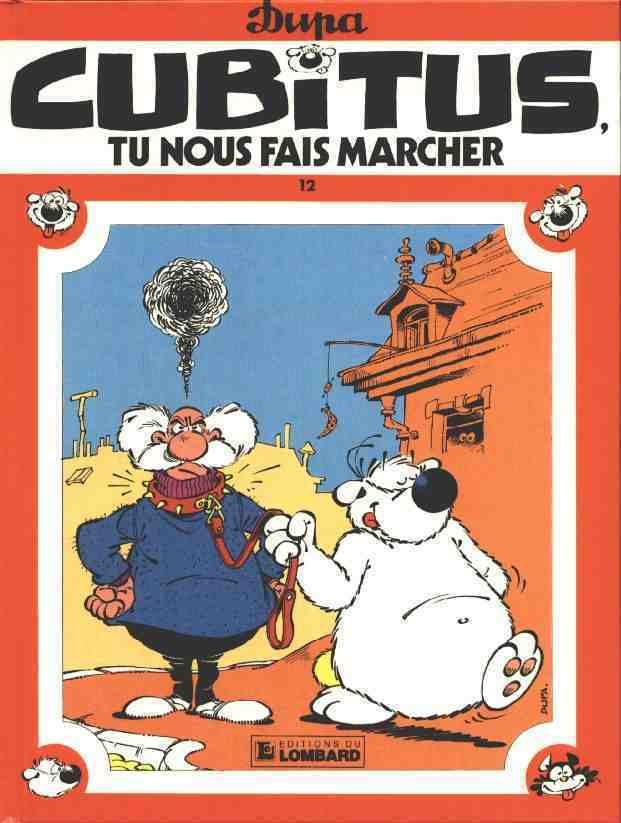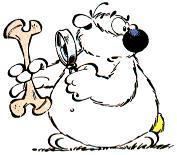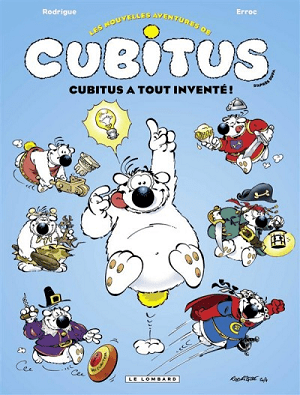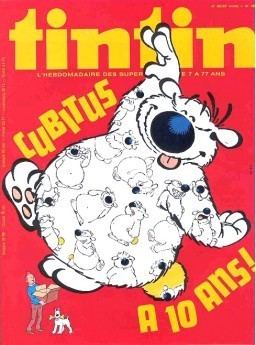Created by Dupa | ||
 | ||
Similar Clifton, Geriatrix, Achille Talon, Léonard, Arthur le fantôme justicier | ||
Cubitus is a Franco-Belgian comics series, and the basis for the Wowser cartoon series appearing in the United States. Cubitus was created by the Belgian cartoonist Dupa, and features Cubitus, a large anthropomorphic dog, who lives with his owner Semaphore. Cubitus is known as Dommel in Flanders and the Netherlands, Muppelo or Pom Pom in Finland, Teodoro in Italy and Доммель in Russia. His name derives from the old anatomical name of the ulna bone, supposedly derived from the Greek kybiton (elbow).
Contents

G n rique cubitus
Synopsis

The series tells the story of Cubitus, a good-natured large, white dog endowed with speech. He lives in a house in the suburbs with his master, Sémaphore, a retired sailor, next door to Sénéchal, the black and white cat who is Cubitus' nemesis.
A vast majority of the album publications collect Gag-a-day single page gags, but a few gather collections of shorter stories or, in rare cases, one long story throughout the entire album. Some of single gags albums or short stories ones are thematic, with for instance in "Cubitus illustre ses ancêtres" revisiting history of humankind, "L'ami ne fait pas le moine" being pastiches of fellow authors from Tintin magazine or Les enquêtes de l'inspecteur Cubitus where he is a fictional police inspector.
Characters

Every now and them appears:
Publication history

Cubitus first appeared in the Franco-Belgian comics magazine Tintin on April 16, 1968. The series gained immediate popularity, and began album publication in 1972. After several years of gags and album publications, it became the title strip for a magazine of its own. The first publication of Cubitus was published by Le Lombard in December 1989, though it proved short-lived, lasting only six issues.

In 2005, the series was relaunched by Pierre Aucaigne (scenarist), and Michel Rodrigue (artist) under the title Les nouvelles aventures de Cubitus.
Short films
In 1977, the strip adapted animated short film are Belvision
Anime

In 1988, the strip was adapted into a Japanese cartoon series named Don Don Domeru to Ron, which was re-titled as Wowser for American audiences. Dubbed by Saban Entertainment, it is the only part of Cubitus that has been translated into English.
